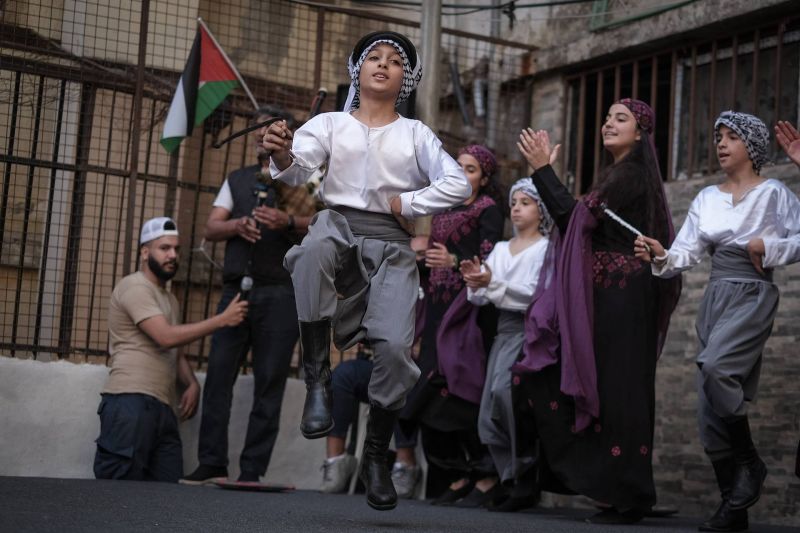
Two days before the Nakba anniversary on May 13، 2023, the Beit Atfal Assomoud dabke troup stomp and show pride in their heritage inside the confines of Shatila camp. (Credit: João Sousa/L'Orient Today)
BEIRUT — A dusty darbuka drum case hangs off on the shoulder of 23-year-old Mohammad al-Hajj as he hooks his fingers around a metal rod on the back of his best friend’s motor scooter. Dodging past waves of people trickling in the opposite direction, they zoom out the flimsy gate of the Shatila Palestinian refugee camp.
They’re on their way to another make-shift Palestine in nearby Burj al-Barajneh, where a buzzing swarm of children simply call Mohammad “coach.”
Waiting for him to commence their biweekly dabke training, little girls in pink hair clips and shoes blackened from street dirt lean on the entrance of NGO Beit Atfal Assomoud, Arabic for “The House of Resilient Children.”
“I come here early and wait for the building to shake,” laughs Sarah Shhadi, 24, an afterschool tutor and dabke supervisor in the center. The green-eyed “Barbie,” as the kids call her, tucks her hands in a yellow puffer jacket matching the Fatah banners outside.
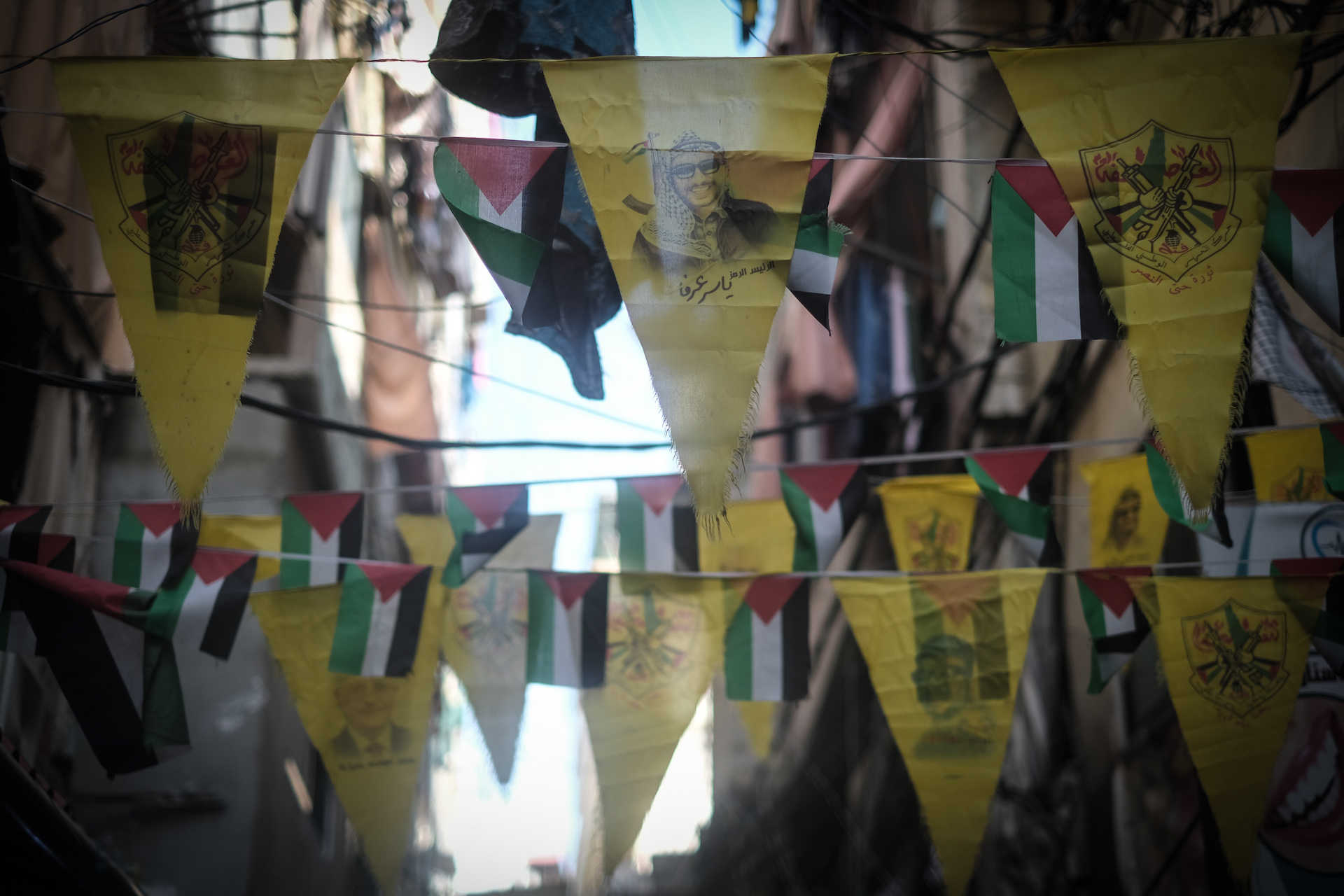 Yellow banners of the Palestinian National Liberation Movement cut through the concrete skies of the Burj al-Barajneh refugee camp. (Credit: João Sousa/L'Orient Today)
Yellow banners of the Palestinian National Liberation Movement cut through the concrete skies of the Burj al-Barajneh refugee camp. (Credit: João Sousa/L'Orient Today)
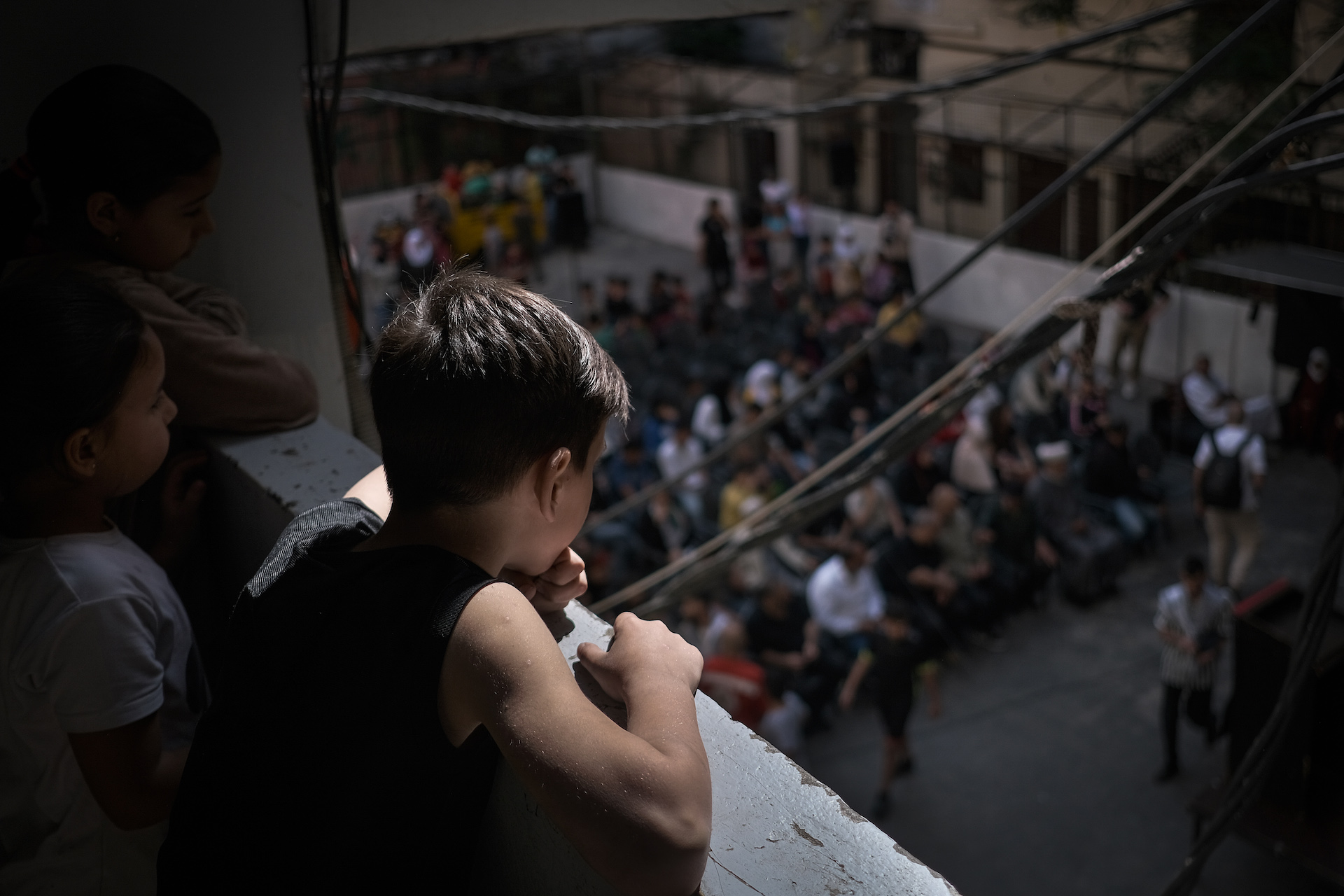 Children wait about for the local dabke performance in Shatila for the 75th anniversary of the Nakba, or “The catastrophy” through which the state of Israel was founded in 1948. (Credit: João Sousa/L'Orient Today)
Children wait about for the local dabke performance in Shatila for the 75th anniversary of the Nakba, or “The catastrophy” through which the state of Israel was founded in 1948. (Credit: João Sousa/L'Orient Today)
The dance group in Beit Atfal Assomoud (BAA) was founded in 1976, during the Lebanese Civil War. It was part of a rehabilitation center for orphans who lost their parents to Christian militia fighters in that year’s Tal al-Zaatar massacre. Offering informal education from literacy to art, and even hosting an adult orchestra called “Kamangati,” who play Arabic instruments like the qanoun, oud, nai and gerbe, BAA is a space for people inside the camps, especially children, to feel part of something bigger than themselves.
“Yalla Shabab!” Mohammad shouts, quieting down a group of boys with peach-fuzz mustaches bobbing in and out of friend groups. The room calms down for a few minutes of slow stretching before Palestinian dabke tunes from “Dallouna” to “Ya Zarif Attul” sizzle out of an old chunky speaker. The group of about two dozen dancers hold hands and stomp their feet in near-unison for a pounding show of life. The longer the rhythm plays, the more unified they become.
“It’s soul. It’s presence. That is what Palestinian culture is,” Mohammad says. He has taught dabke ever since he was 13, following in the footsteps of his late father, Abdel Latif, who died when Mohammad was a teenager.
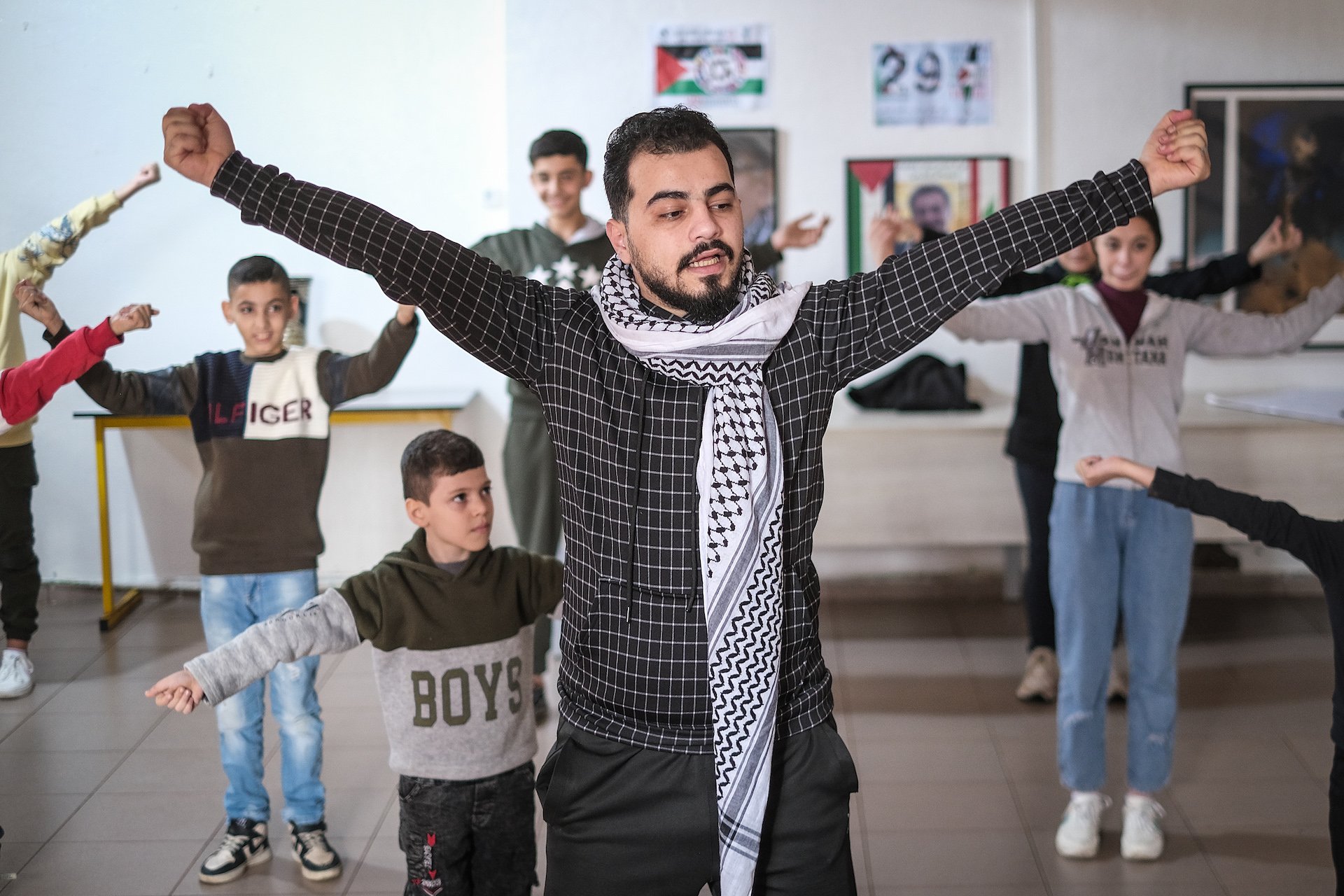 Mohammad teaches the dabke squad a new sequence for the upcoming “Land Day” commemoration in March. (Credit: João Sousa/L'Orient Today)
Mohammad teaches the dabke squad a new sequence for the upcoming “Land Day” commemoration in March. (Credit: João Sousa/L'Orient Today)
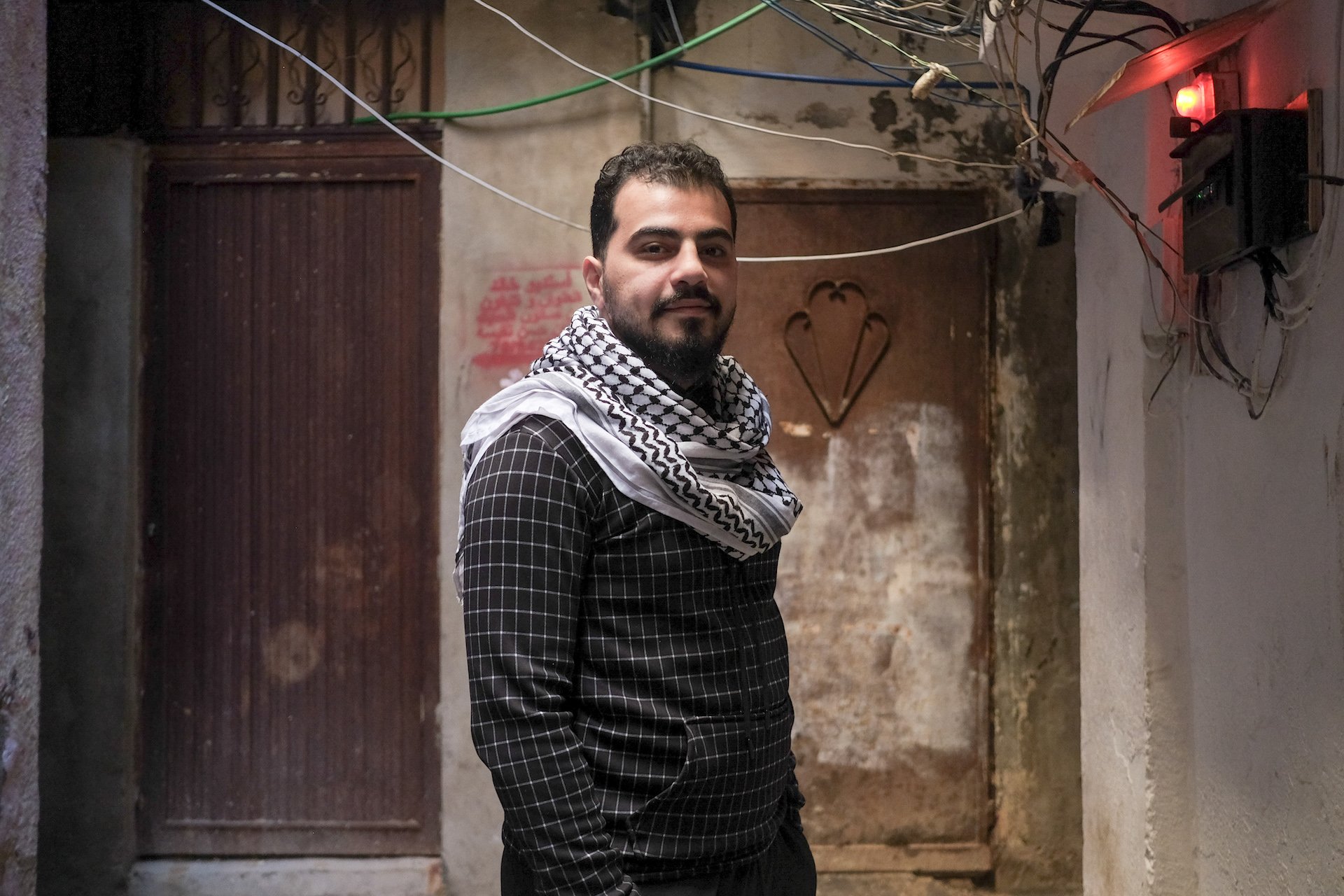 Mohammad Abdel Latif al-Hajj, the dabke pioneer and passionate successor of Palestinian culture among the youth. Living in Shatila camp, his true dream is “do everything we are doing here in Palestine, God willing.” (Credit: João Sousa/L'Orient Today)
Mohammad Abdel Latif al-Hajj, the dabke pioneer and passionate successor of Palestinian culture among the youth. Living in Shatila camp, his true dream is “do everything we are doing here in Palestine, God willing.” (Credit: João Sousa/L'Orient Today)
“I’ve always dreamed of going on stage and stomping Palestine into the minds of those who watch me.”
He says his dream came true when he won first place in a professional dabke competition against all groups in Lebanon. Returning to Shatila with awards for “best coach” and “best group,” he ran to his father's grave and gave them up to him.
A time to dance
Jamili Shhadi, 70, manager and early founder of the center, can’t stop speaking about love. In a breathy voice for storytelling, she repeatedly quotes in Arabic,:“How suffocating life would be if not for a glimmer of hope?” There since the beginning, she has witnessed the camp's population grow tenfold, hemmed in by a dark concrete maze and crippling poverty.
“There were times when people in the camps would go around the alleyways dancing dabke, playing music, smiling, getting everyone involved, and the entire camp would rejoice!” she reminisces. Since the beginning of Israel’s latest, bloodiest assault on Gazan civilians in October, the only sounds shared by the residents are the echoes from Gaza between TV static.
“But look at these kids,” she points to the dabke squad, “look at them dance and jump and cheer, the most important thing is for the kids to be happy.”
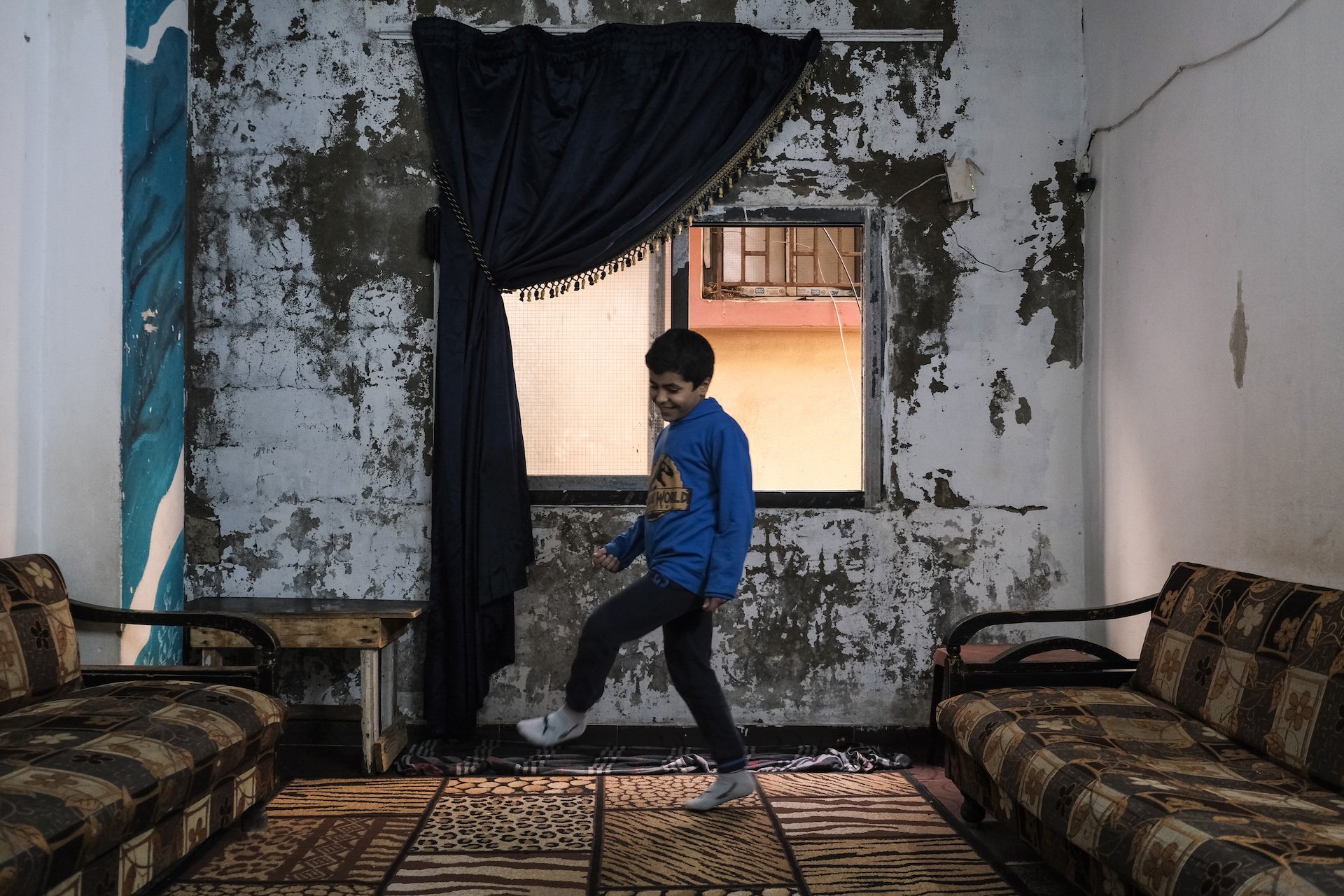 Adam is especially intricate about his dance moves. Rehearsing for the show on Hamra Street, he practices his most challenging move, the “wahdi w noss” in the humble salon until he is convinced that he can do it right. (Credit: João Sousa/L'Orient Today)
Adam is especially intricate about his dance moves. Rehearsing for the show on Hamra Street, he practices his most challenging move, the “wahdi w noss” in the humble salon until he is convinced that he can do it right. (Credit: João Sousa/L'Orient Today)
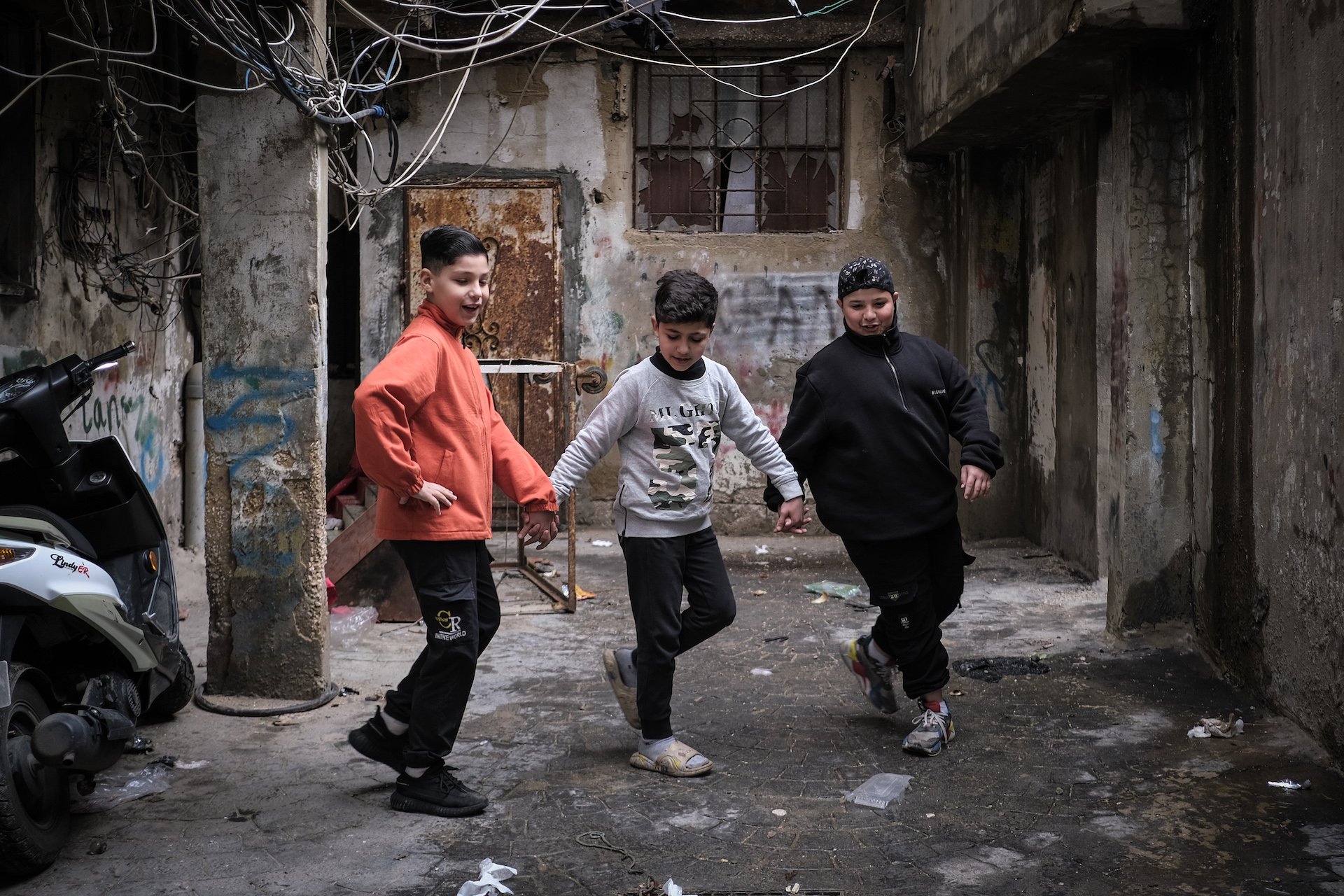 In orange, Abed Aziz started dabke when he was seven years old. Now 12, he occasionally teaches dabke in the neighboring Palestinian Chess Association. He clutches hands with his friends in the street before his home and mumble the tune of “Zarif Attul” as they perform the dance spontaneously. (Credit: João Sousa/L'Orient Today)
In orange, Abed Aziz started dabke when he was seven years old. Now 12, he occasionally teaches dabke in the neighboring Palestinian Chess Association. He clutches hands with his friends in the street before his home and mumble the tune of “Zarif Attul” as they perform the dance spontaneously. (Credit: João Sousa/L'Orient Today)
Mohammad is firm about why he teaches dabke: to encourage the new generation to come together in rapturous joy. A loud undeniable demonstration of indigenous pride.
“It’s a message to our brothers and sisters in Gaza and the West Bank, to tell them that we’re here. That Palestine is something that’s still alive, inside us. That we will continue on the journey.”
Rooted in Mohammad’s darbuka is a deep longing for return, he says. He likes to sit in one corner of his living room to practice orchestrating the beat his group dances to, echoing waves of sound to the dozens of homes surrounding his own in Shatila.
“Liberation is near, very near.” All the while, he hopes that he can eventually dance in his hometown of Safad, Palestine, each drumbeat pulling him a bit closer to the grape vines that he’s only heard about through family stories.
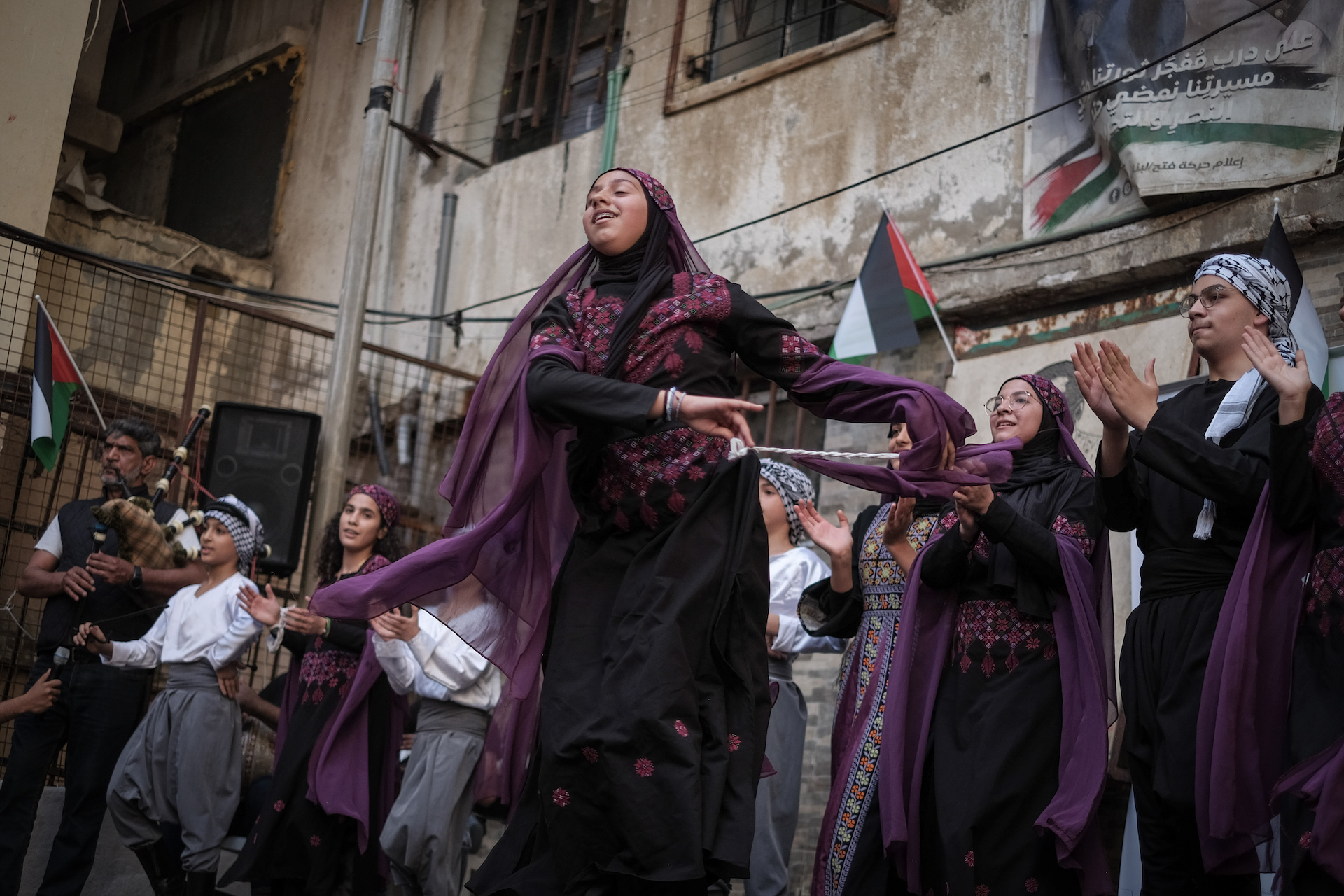 Closing their eyes, teens in Shatila feel a palpable freedom. (Credit: João Sousa/L'Orient Today)
Closing their eyes, teens in Shatila feel a palpable freedom. (Credit: João Sousa/L'Orient Today)
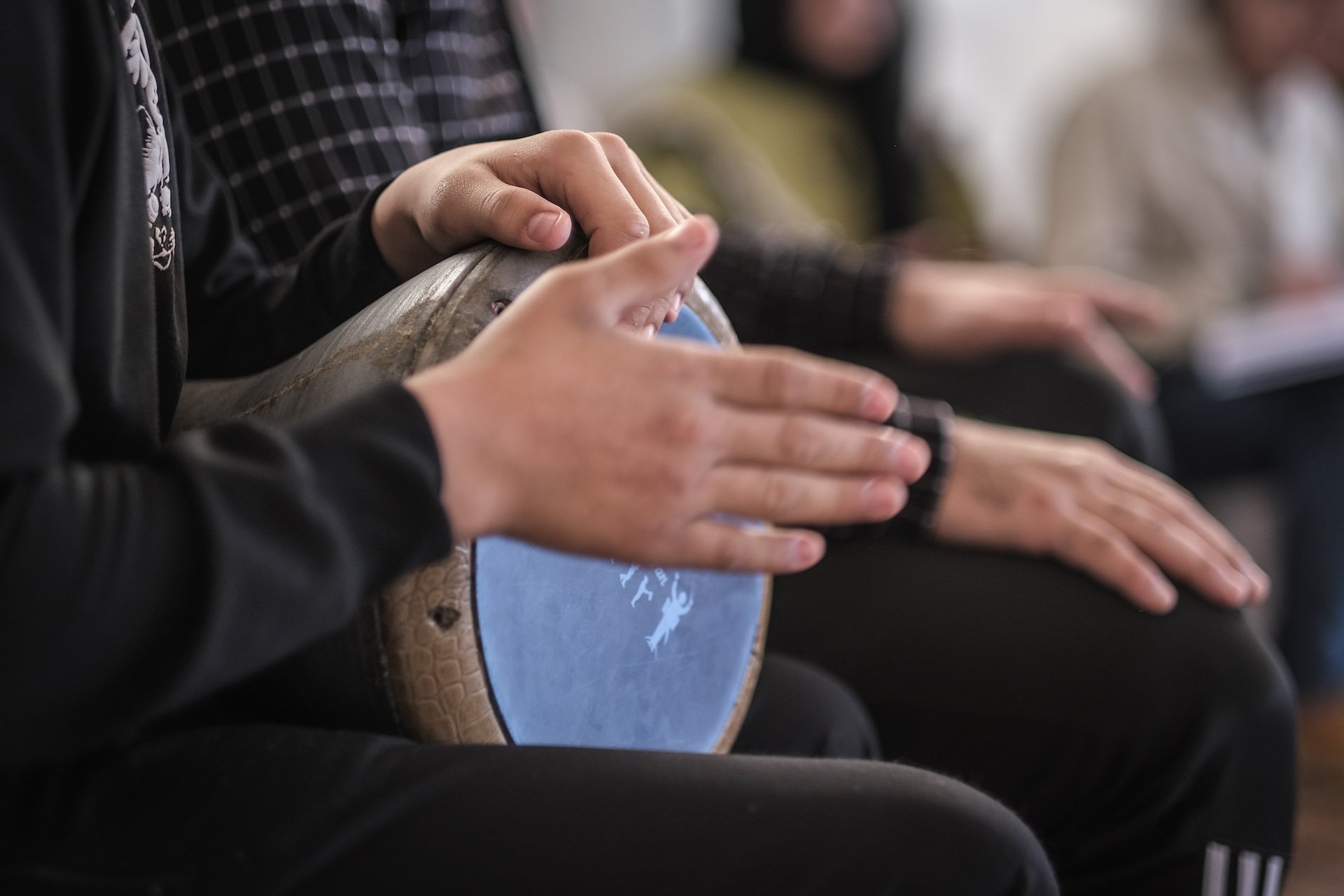 Mohammad lets one of his students freestyle on the darbuka, laying fertile grounds for a dabke culture that lives beyond him. (Credit: João Sousa/L'Orient Today)
Mohammad lets one of his students freestyle on the darbuka, laying fertile grounds for a dabke culture that lives beyond him. (Credit: João Sousa/L'Orient Today)
Dream a little dream
Palestinian rights as refugees in Lebanon are frustratingly scarce. Unable to register in any professional syndicate, an estimated 80% are formally unemployed and “stuck” in the camps, according to The Middle East Monitor.
Their best shot of leaving the camps is through a scholarship, which most dedicate their youth to. Winning one is rare. Many with expert degrees nevertheless end up working as unskilled labor. But the kids in Mohammad’s dance group don’t yet know this.
Burj al-Barajneh dabke dancer Hanan al Ali, 11, spends her free time drawing traditional limestone and red-roofed Palestinian houses with vast gardens and a trademark brown spotted cat sitting on the doorstep, whom she calls Harhour. “My house looks nothing like this,” Hanan laughs, but still she dreams through her colored pencils.
With ambitions to become an engineer, Hanan's parents encourage her with a heavy heart. “We pray that she gets a scholarship. We are always with her in chasing the things she wants out of life… but as you know, these types of careers don’t exist in the camp,” her mother says.
Twelve-year-old Farah Sarkhas, with round tender cheeks framed by a tidy white hijab, speaks of becoming a lawyer to “help defend those who can’t do so themselves.” Her childhood friend Jamil Hotini, 10, whom she plays PUBG with on her mother’s phone, dreams of becoming the next ground-breaking YouTuber. And Adam, nine, who lives steps away from the BAA center down a dark cement alleyway, says he wants to be a pilot. When asked why, he scoffs like it’s a stupid question: “To fly.…”
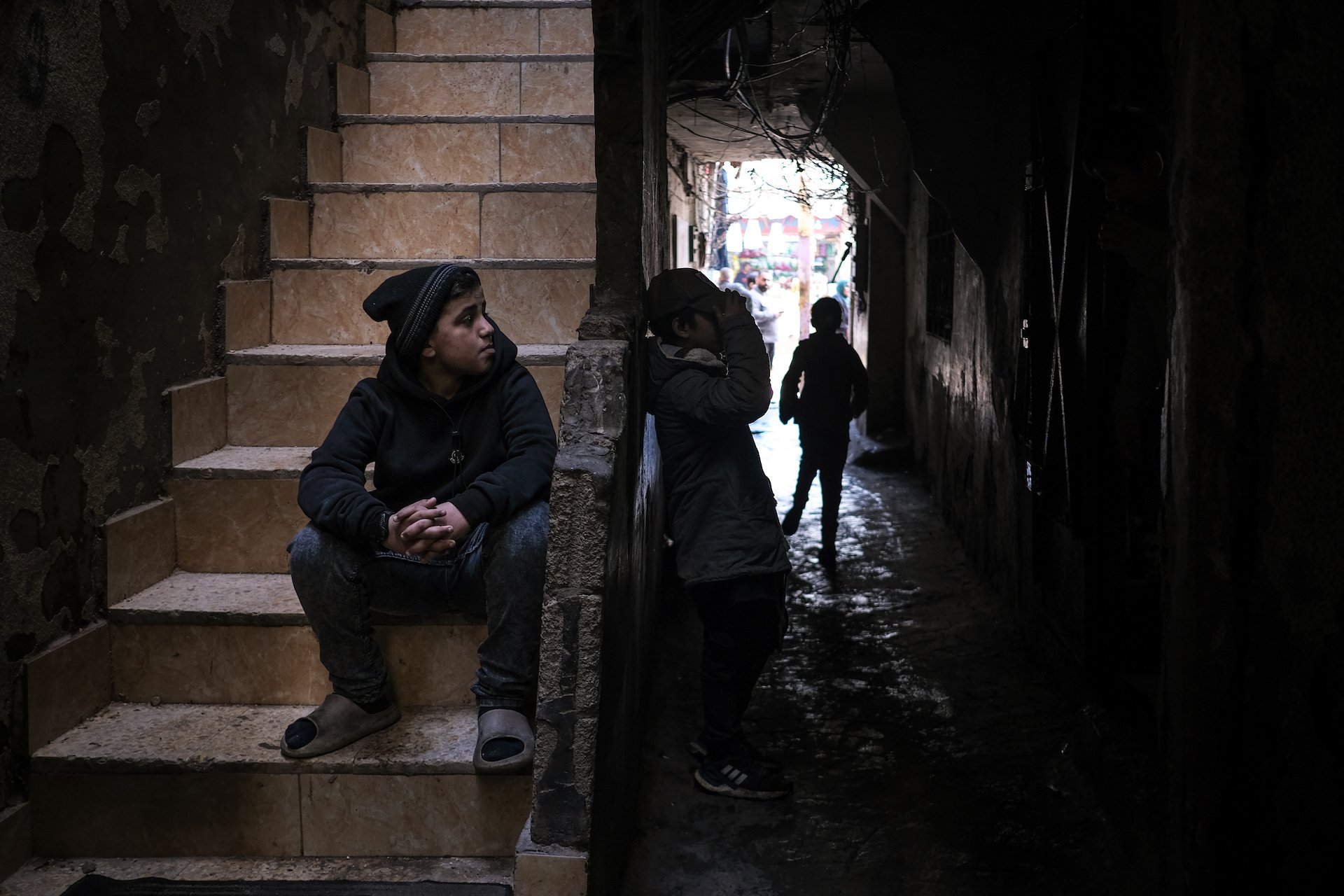 The corridor leading to the BAA center where the dabke group have biweekly trainings. Past the darkness is a peek of oozing sunlight that shows the pink flower murals introducing the center. (Credit: João Sousa/L'Orient Today)
The corridor leading to the BAA center where the dabke group have biweekly trainings. Past the darkness is a peek of oozing sunlight that shows the pink flower murals introducing the center. (Credit: João Sousa/L'Orient Today)
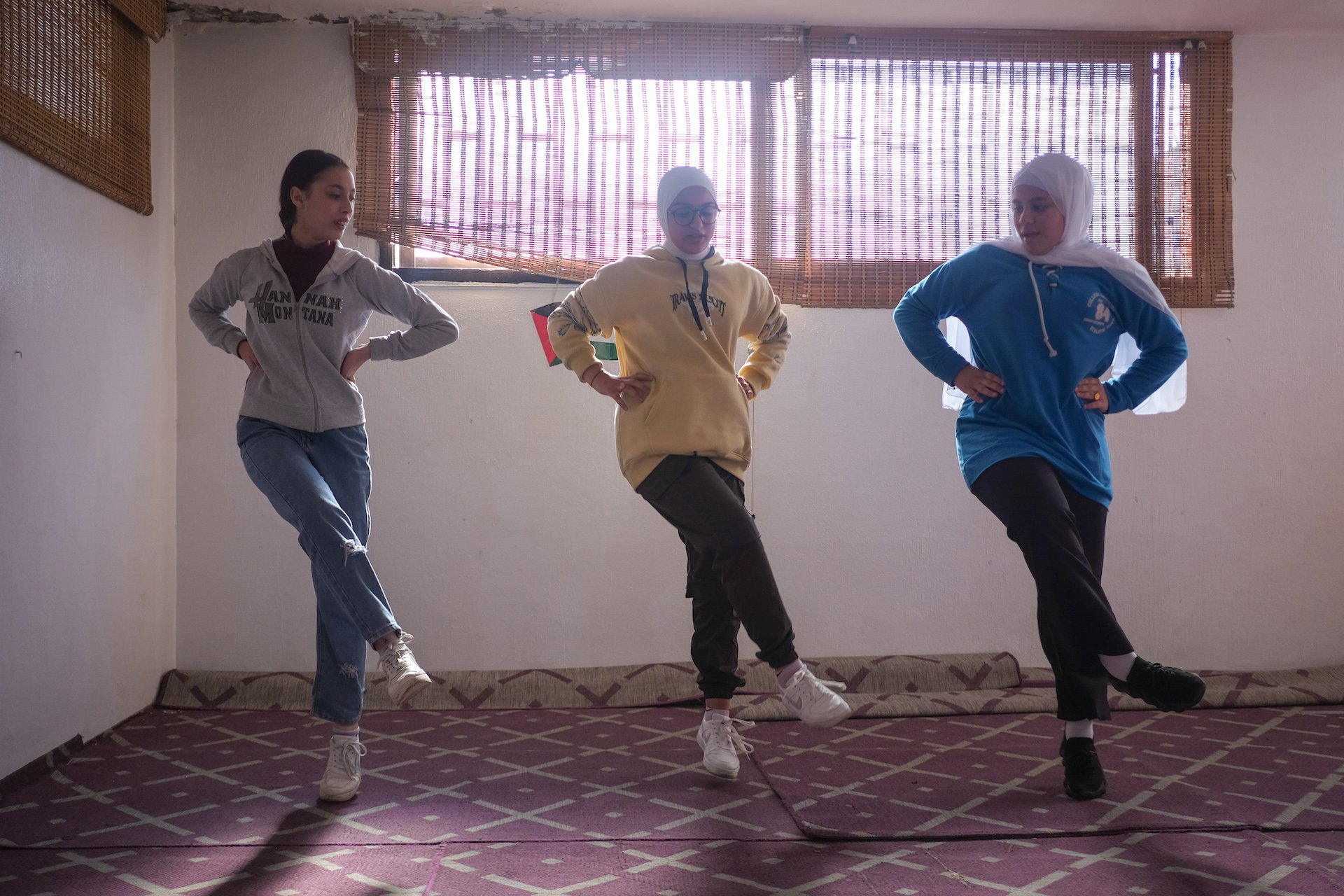 On the carpeted platform away from the group, the girls catch up on the moves they missed. (Credit: João Sousa/L'Orient Today)
On the carpeted platform away from the group, the girls catch up on the moves they missed. (Credit: João Sousa/L'Orient Today)
Ambitions of a dignified future bubble in the kids of Mohammad’s dabke group but the coach admits that “there’s no future inside the camps.” While he was able to achieve his dream of being a dancer, his two brothers were not as lucky. “My brothers died in 2020,” shortly after his soul-igniting win in the national [dabke] competition, “in the sea” Mohammad says timidly. Escaping what they felt was a life on hold inside the camps, they paid people smugglers to board a boat bound for Italy. It tragically capsized off the coast of Tripoli.
Mohammad married a few months later without a sign of celebration.
‘HEYYA!’
Preparing for a performance in Hamra Street, the girls bustle through in their Palestinian dresses and pin each other’s hijabs while the boys wrap kuffiyehs around their heads, matching the belts that hold up their traditional sirwal pants.
“My favorite part about performing is when we chant,” 16-year-old star dancer Jinan says about the haysa, a chant of “HEYYA” that they collectively bellow between steps. “It’s like an ia’az [instruction]. We say it before we change the moves, so we do it together.”
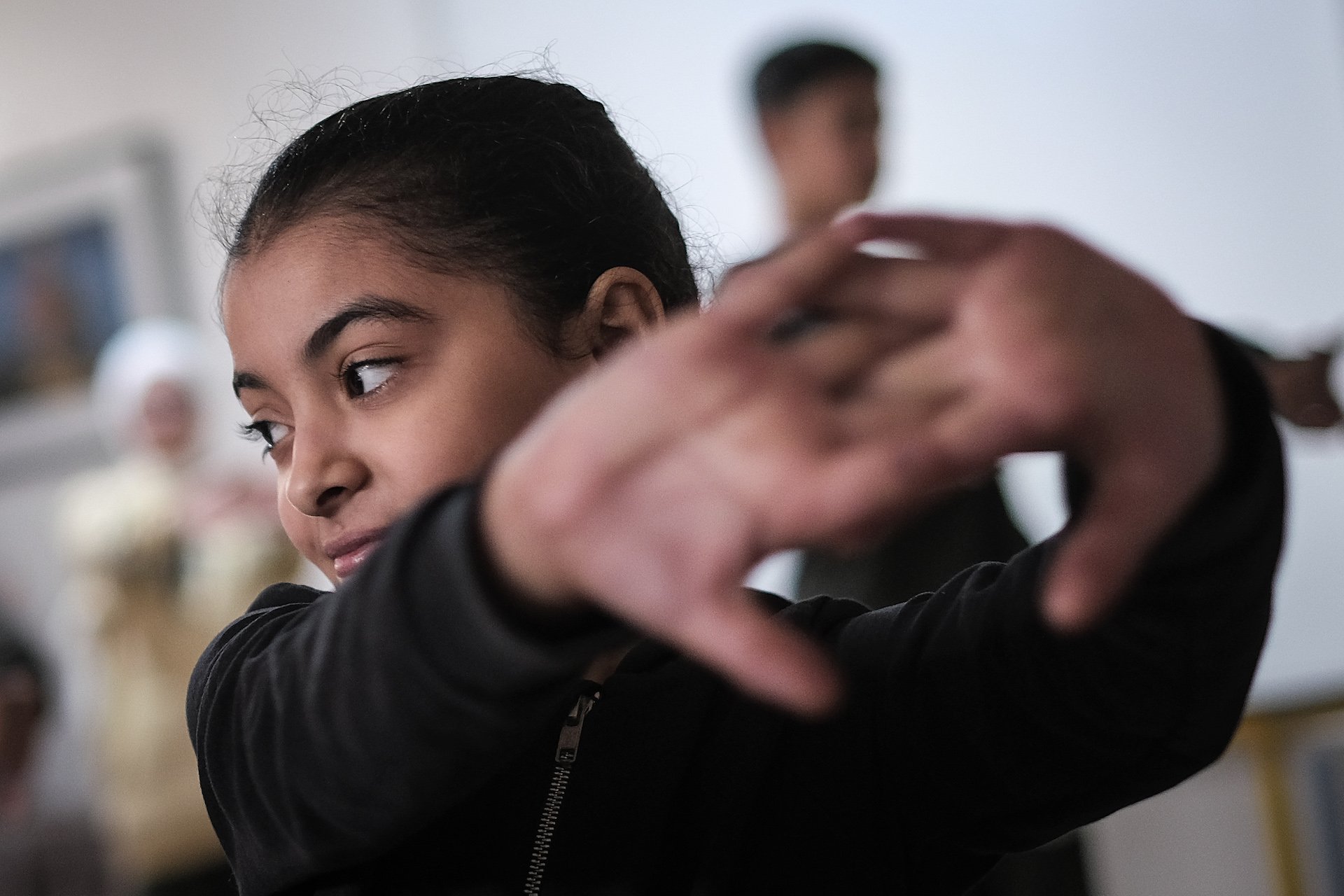 Nine-year-old Jury dreams of becoming a powerful CEO. While her ambitions are untethered, her nightly dreams are often nightmares set in bloody warzones “because I follow the news alot,” she hints at the atrocities in Gaza. (Credit: João Sousa/L'Orient Today)
Nine-year-old Jury dreams of becoming a powerful CEO. While her ambitions are untethered, her nightly dreams are often nightmares set in bloody warzones “because I follow the news alot,” she hints at the atrocities in Gaza. (Credit: João Sousa/L'Orient Today)
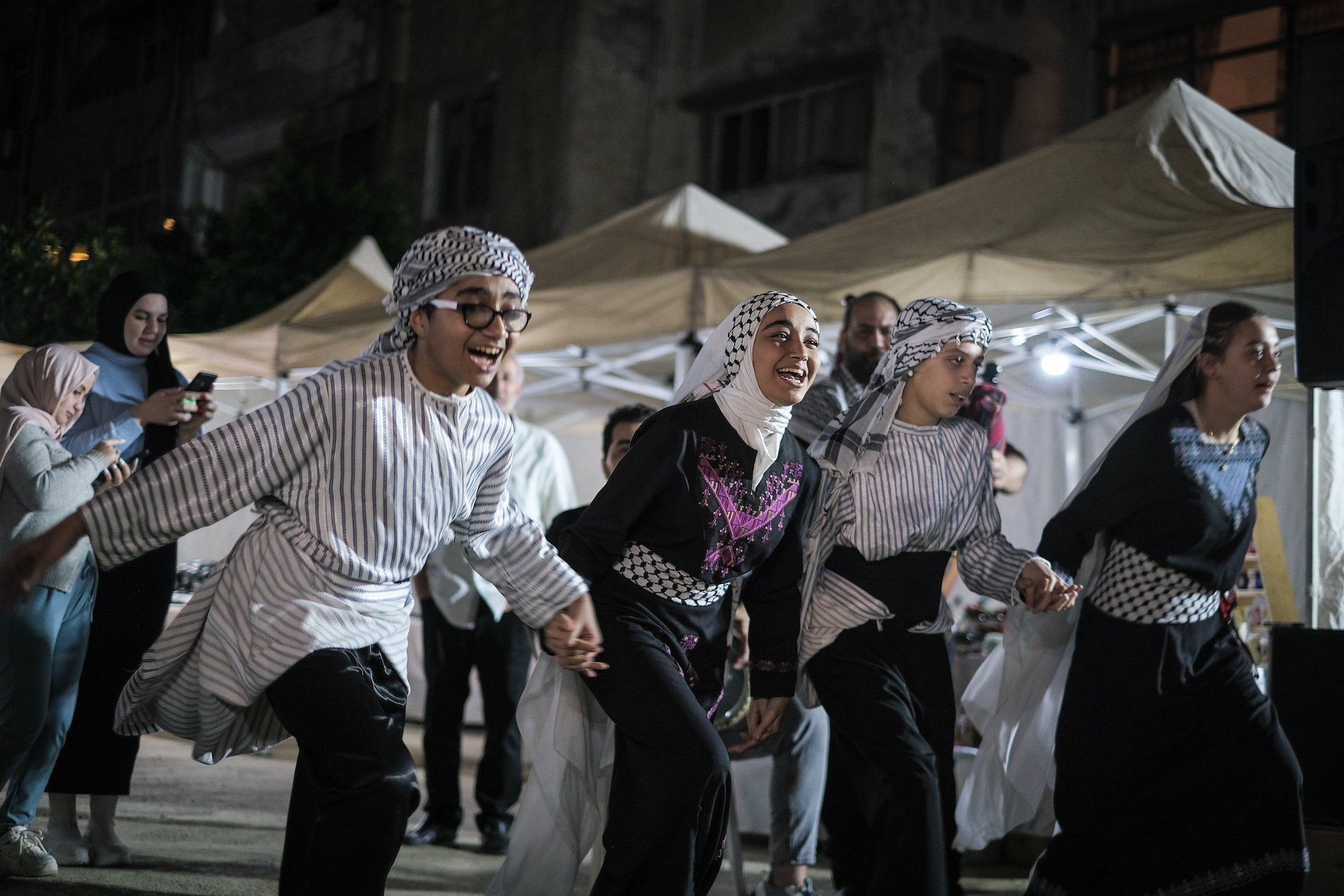 Star dancer Jinan holds hands with her brother Baraa and her friend Ali from Shatila as they break through their chants. (Credit: João Sousa/L'Orient Today)
Star dancer Jinan holds hands with her brother Baraa and her friend Ali from Shatila as they break through their chants. (Credit: João Sousa/L'Orient Today)
Excited to see each other, the groups from Shatila and Burj al-Barajneh unite while hopping off the buses at a venue lit by LEDs.
Leaving the stage behind them to dance on the ground, herds of viewers stand in arm's reach. Hymns of the Arabic bagpipe (gerbe), move the audience to hold hands with one another as the instrument sings its hypnotic solo. Suddenly bursting past the audience’s whistles, Mohammad bangs up a storm on his tableh and watches. His vision comes to life as waves of crisp zalghoutas fly out to the crowd. Each stomp pounds through the ground, every dancer’s shout “echoing into Gaza,” Mohammad later says.
Watching the group explode in euphoria, it's a surreal moment of manifestation. Dabke is said to have originated as a ritual of gathering on rooftops to stomp down muddy roofs. Today, they dance to edge ever closer to home, finding it in every leap and shared glance as they merge from lines to circles. Their dreams safe in the space between each other's palms, the children shout "HEYYA!" and go on reverberating across the earth.
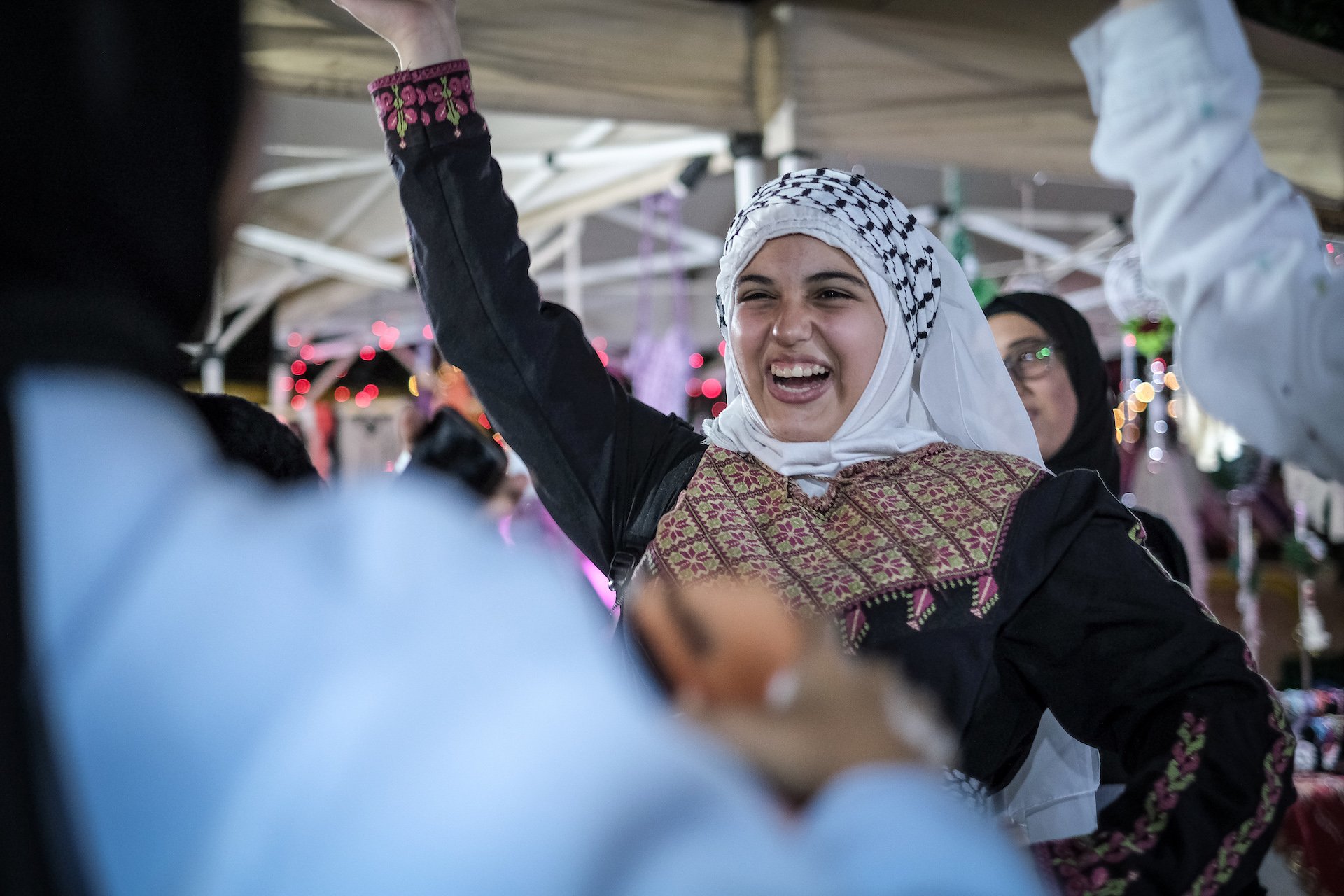 In the space between each other's gazes, immeasurable joy brews for a fleeting moment. (Credit: João Sousa/L'Orient Today)
In the space between each other's gazes, immeasurable joy brews for a fleeting moment. (Credit: João Sousa/L'Orient Today)
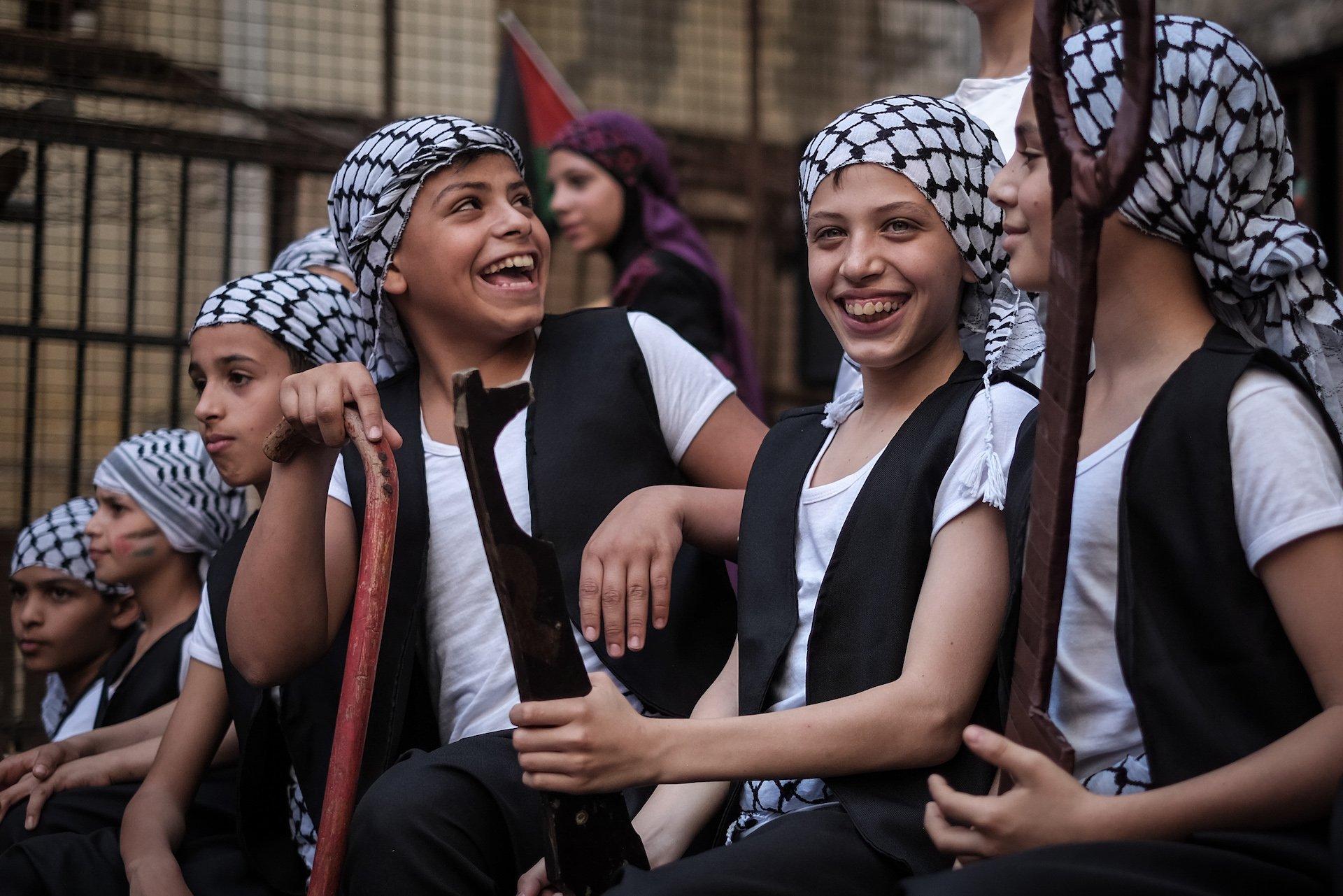 Smiling into the distance is Ali Husari, who says the best part about coming to dabke practice is seeing his friend Mustafa, whom he sees every day anyway. (Credit: João Sousa/L'Orient Today)
Smiling into the distance is Ali Husari, who says the best part about coming to dabke practice is seeing his friend Mustafa, whom he sees every day anyway. (Credit: João Sousa/L'Orient Today)
